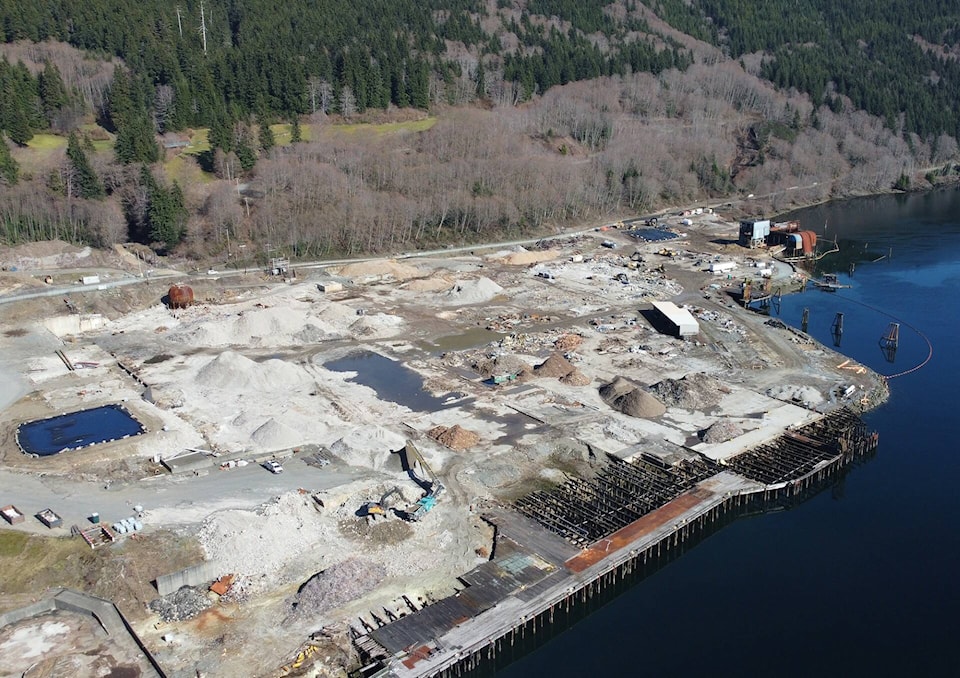A delegation from the BC Ministry of the Environment and Climate Change Strategy came to Port Alice back on Feb. 28 to give Port Alice Village Council another update on the mill stabilization.
The delegation, all from the Environmental Protection Division, included Laurel Nash, assistant deputy minister, Rod Allen, acting executive director, Environmental Emergencies & Land Remediation Branch, and Maureen O’Connell, acting unit head, Environmental Emergencies & Land Remediation Branch.
Council was shown a slide of a digester that has been recently dismantled. Two digesters remain to be taken down and recycled by the trustee, Price Water House Cooper.
A new water treatment plant, able to treat up to 500 metres cubed per day, is up and running. It is removing the mercury from the effluent that is collected. The rest of the water processing infrastructure, except for the aeration basin, is still being used for effluent management: it is holding the water that comes off the landfill so that it can be treated prior to discharge.
A landslide from the Knott landfill occurred either late on Christmas Day or Dec. 26. It blocked Marine Drive, creating long detours for WFP workers and tourists going to the Wild West Coast. The receiver cleared the material from the road on Feb. 21 and put some lock blocks where the slide material is coming down, though there is still some water running through that area.
New signage has been installed that warns users of the hazards on the road and advises not to stop for 1 km.
Atkins Realis, formerly SNC Lavalin, was hired to conduct a third-party review of the stabilization closure plan that Tetratech had put together. Atkins Realis agreed with Tetratech in that additional drilling investigation was warranted to learn more about the area. After a geotechnical drilling investigation that was initiated in November, it was discovered in early February that there are renewed concerns with the stability of the lower slope, below the main landfill.
Data processing is still ongoing, but the ministry was informed that the main landfill closure can’t occur this construction season as was previously planned. Completion of stabilization activities were on track for April, with the needed equipment already being brought on site. A cap needs to be placed over the landfill to decrease the leeching that is coming through. Because this can’t happen at this time, closure will be delayed until 2025-2026.
Many impacts are arising from that delay. Previously, the receiver was looking to do a drill and shoot program to harvest aggregate to use on site. They can’t do that at this time because blasting would need to occur near the main landfill where there are slope stability concerns.
The water treatment plant may need to be expanded, so that it can treat more than 500 metres cubed per day, or other plans may need to be made to deal with large quantities of effluent. If the landfill could have been capped this summer, the quantity of effluent would have decreased. Not quite so much water would have needed to be processed after the rainy season.
One other major task remaining is the marine log dock demolition. Lemare has been on sight and is doing some preparatory work to bring down the structure.
No decisions have been made on the future of the mill site or on future ownership. By the end of fiscal period 2023-2024, the de-risking and stabilization of the mill site is estimated to cost the provincial government $116 million.
